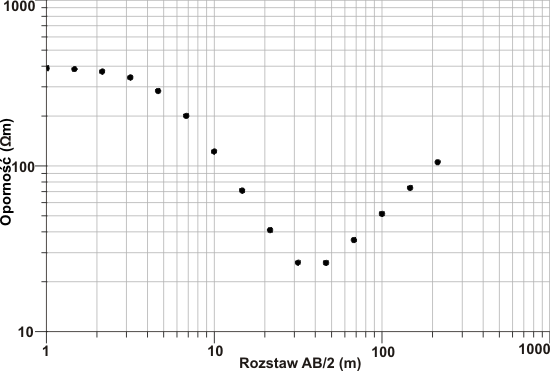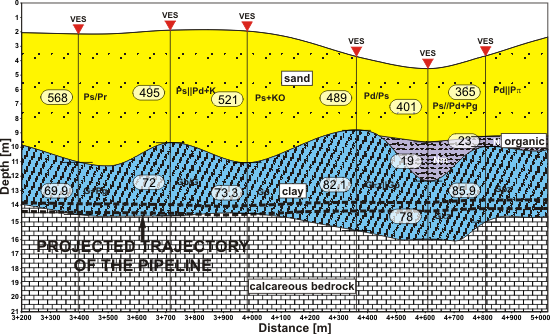Main Page | Knowledge base | Geophysics | Resistivity surveys | Resistivity surveys by sounding technique
RESISTIVITY SURVEYS BY SOUNDING TECHNIQUE
Resistivity soundings is basic resistivity technique. This technique bases on the relegation of current electrodes from the potential electrodes in subsequent step to increase the depth of investigation. The point for which the measurement is made is in the middle between the potential electrodes.
Most common arrays used in this method are Schlumberger’s and Wenner’s array. In Schlumberger’s array the current electrodes are remote from the potential electrodes while in Wenner’s array distance between electrodes is the same.

Resistivity sounding curve
The results of electrical soundings are the electrical resistivity sounding curves which present reliance of apparent resistivity on the half-distance between current electrodes. Such curve (field curve) allows to interpret the actual resistivity and thickness of layers. The solution is the selection of most probable and data-reflecting geoelectrical model. For this purpose are used numeric methods that allow to minimize the matching error until the satisfying solution is received.
Basic problem which occur during interpretation is equivalence which means the curves fit to each other for different models. Another limitation is also horizontal variation of electrical resistivity, disregarded in this method. That is why vertical electric soundings are suitable particularly for paralel-plane or slightly inclined layer system. Final result is the geological-engineering interpretation in correlation with data from boreholes.

Interpreted resistivity sounding section correlated with geotechnical data
One of the greatest application of this surveys is geoelectrical monitoring – repeating the surveys in the same points carried out with determined time interval to observe changes in time (e.g. process of migration of contamination from stockpile, variations and fluctuations of water table).
More advanced method is electrical resistivity tomography which is combination of electrical sounding and profiling. Tomography allows to characterize the variation of resistivity in the ground-rock substrate in much more efficient way.










